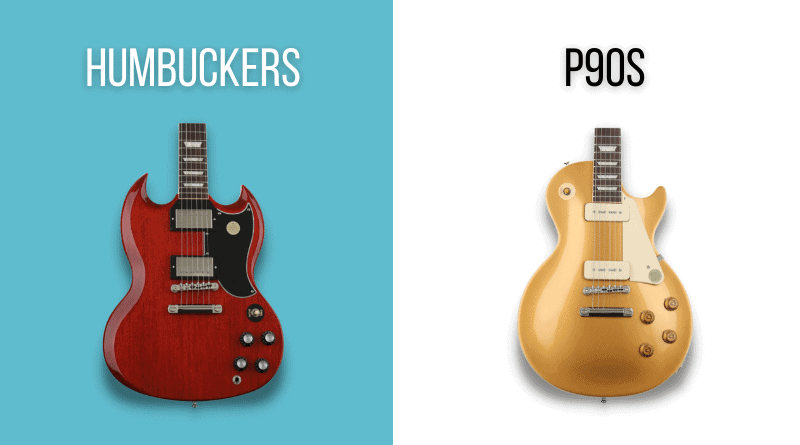There are a number of different types of electric guitar pickups in use today. In some cases the differences are quite clear, both in terms of construction and tone, and yet, we still regularly find ourselves being asked “what is the difference between humbuckers and P90s?”.
Both humbuckers and P90s were invented by Gibson, and have found use across practically every genre and style of music.
In this KillerGuitarRugs Guide, we’ll be looking at both of these pickup types to learn more about what they are, how they work, what they sound like, and we’ll even introduce you to some of our favorite guitars fitted with P90s and humbuckers.
If you’ve been asking yourself this question, this is a guide you won’t want to miss. Keep reading to learn more.
Contents
Primary Differences Between Humbuckers and P90s
At a glance, the main differences between Humbucking pickups and P90 pickups are:
- Humbuckers make use of 2 coils wound opposite and out of phase, while P90s are single coil pickups
- Humbuckers have a thick, fat sound, whereas P90s are known for their distinctive gritty growl.
Humbucking Pickups
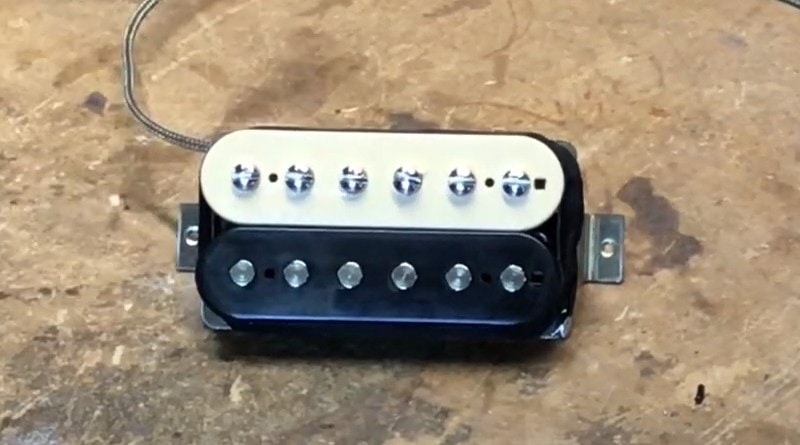
Humbucking pickups, widely known as humbuckers, were invented by legendary guitar builder and designer Seth Lover during his tenure at Gibson in the Ted McCarthy era. These early humbuckers were known as PAF, or Patent Applied For”, and are regarded as being the gold standard when it comes to humbucker tone.
What Are Humbucking Pickups?
Today, humbuckers are some of the most commonly found pickups on any guitar. They are designed to reduce or “buck” the unwanted 60-cycle hum that can occur when using single-coil pickups.
They achieve this by using two coils that are wound in opposite directions and out of phase with each other. This cancels out the interference caused by electromagnetic induction, resulting in a much quieter sound.
While they were invented to kill the hum, their design also resulted in a much thicker, warmer tone, which gives electric guitars a completely different sound to their single-coil counterparts. Different humbuckers also sound different from each other, which is why installing new pickups is such a popular upgrade for Les Pauls and Strats alike.
Why Use Humbucking Pickups?
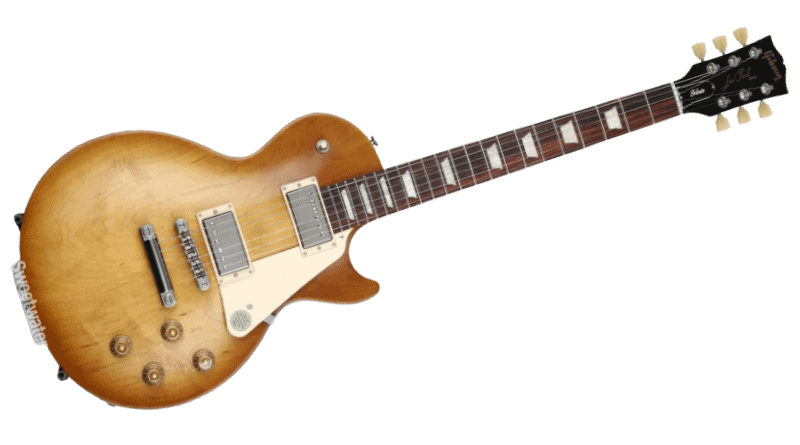
The main reason why guitarists use humbucking pickups is because they produce a significantly hotter sound with less interference than the majority of single-coil pickups.
They’re also less prone to feedback at high volumes, which makes them ideal for use in live settings. Another advantage of humbuckers is that they tend to have a wider frequency response than single-coils, resulting in a fuller and more well-rounded sound.
Different Types of Humbucking Pickup
Full Size
Full size, or PAF humbuckers are exactly what most people think of then they’re asked to imagine a humbucking pickup. They have a full, thick sound that’s fantastic for almost every genre of music.
Mini
Mini humbuckers look a lot like full size PAF humbuckers, but they’re much smaller. Because of the narrower size, they don’t sense as much of the string vibration as a full size unit, resulting in clearer, sharper tones that more closely resemble a P90, but with less 60 cycle hum.
Active
Active humbuckers have an external power source to generate their signal. They still make use of a magnet, but the blend of the electromagnetic signal and that from the battery results in a much higher output. These pickups are most commonly used in heavier genres like metal for that very reason.
How Do Humbucking Pickups Work?
As we mentioned earlier, humbucking pickups use two coils that are wound in opposite directions and out of phase with each other. When the strings vibrate, it creates a magnetic field that is picked up by both coils. However, because the two coils are out of phase with each other, they will cancel out any unwanted 60-cycle hum while still retaining all of the electrical signal, which results in the thick, warm tone they are known for.
Best Humbucker Guitars
Gibson SG Standard ‘61 – High End
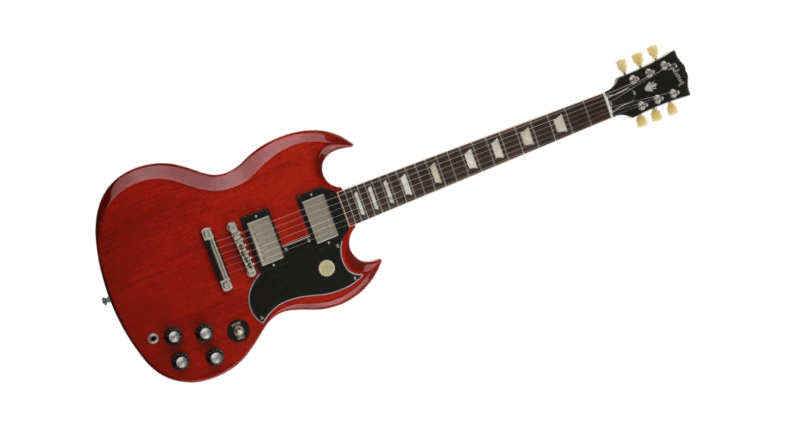
Like the Gold Top in our best P90 guitar selection, the Gibson SG Standard ‘61 is closely modeled after the original 1961 SG, the guitar that was to replace the original Les Paul
It’s an all mahogany model, with a slab body and contoured edges for extra comfort. Because there’s no maple cap, it’s extremely lightweight. SGs like this have a darker tone, which is why they’ve been so popular in hard rock and metal.
It has a ‘60s SlimTaper neck, which is slim, fast playing, and extremely snappy, and like many current model Gibsons, it’s had a full PLEK treatment for the ultimate in playability.
There are 2 PAF style BurstBucker humbucking pickups fitted, both of which can do everything from crisp cleans and rich warmth, through to punishing overdrive. It’s a brilliant all rounder that works well for both rhythm and lead players.
Charvel Pro Mod San Dimas Style 1 – Mid Range

Charvel has a long history in rock and metal, and their guitars are well known for their huge humbucking tones.
The Charvel Pro Mod San Dimas Style 1 is based on the classic Fender Stratocaster, but with a twist. It has a comfortable alder body, which is both lightweight and ergonomic, and provides some brightness to balance out the warmth of the humbuckers. It has a bolt on maple neck, with a fantastically slick, hand oiled speed neck profile. It’s extremely comfortable, and one of the fastest necks around.
For its pickups, it has a combination of 2 Seymour Duncan humbuckers, with a ‘59 in the neck position, and a JB in the bridge. This is a well known pairing, and it delivers much more than just rock and metal tones. With this guitar, you’ll be able to do anything from crisp cleans, to screaming hair metal!
Topping it all off, is a genuine Floyd Rose tremolo system, and locking nut, allowing for dive bombs and heavy trem use without loss of tuning stability.
ESP LTD TE-200 – Budget
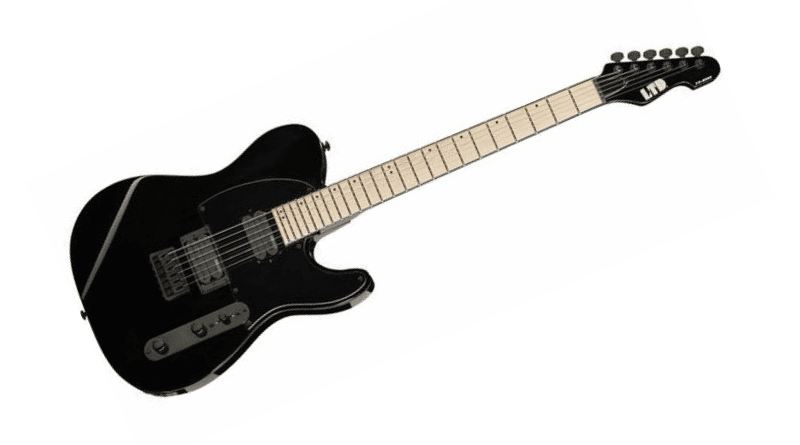
The ESP LTD TE-200 is a Telecaster style guitar, but aesthetics are where the similarities end. Unlike the signature brightness and twang of the Fender classic, this ESP delivers the thick aggressive tones you’d expect from a humbucker equipped guitar.
It has a mahogany body, which adds further to the warmth and results in a very similar sound to the SG. Unlike many Telecasters, it actually features a belly carve for improved ergonomics and comfort.
The maple neck is bolted on, and has a contoured heel for easy access to the upper frets. It has a thin U profile, which is fast playing, and very comfortable.
As for electronics, it has 2 ESP designed humbucking pickups which are fantastically well balanced, especially for a budget guitar. They are thick, and retain their clarity even when pushing tons of overdrive. They do cleans very well, with tons of warmth and even a little shimmer at the top end.
P90 Pickups
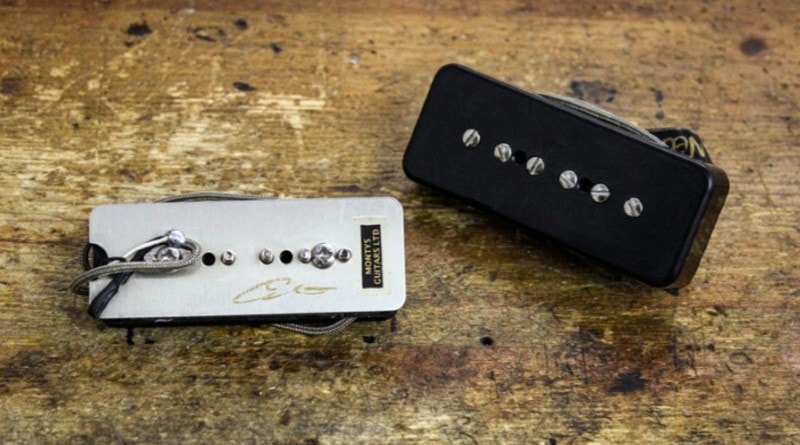
Like the Humbucker, P90 pickups were another Gibson invention. While they are thought to have been developed as early as 1940, they weren’t officially in use until the post war era, in 1946 when they were presented as an alternative to the Charlie Christian pickup.
What Are P90 Pickups?
Interestingly, P90s were actually the first pickups installed in the Gibson Les Paul, a guitar that is now best known for its humbucking tones. However, they fell out of favor in the 1950s when humbuckers became commonplace. In recent years, however, P90s have made a comeback having gained a cult following amongst rock and punk players.
P90s are actually a type of single coil pickup. They differ from the single coils found on most Fender models like the Stratocaster and Telecaster, in that they have a wider and shorter bobbin, which results in a hotter output and slightly less hum, giving them a quieter sound (although not as quiet as humbuckers).
Why Use P90 Pickups?
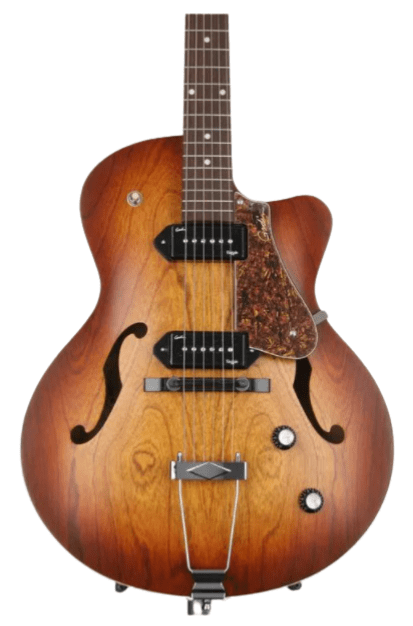
P90 pickups offer a unique alternative to other types of single coil pickups. They have a higher output than most single coils,and makes them better suited for high-gain amplification. They also have their own distinct sound, often referred to as the “growl” that many guitarists find appealing.
The P90 is prized for this growling tone, especially amongst punk circles. In fact, it was largely thanks to the popularity of the humbucker that P90s found their purpose in this genre. As humbuckers became more common, early P90 equipped guitars found their way to the pawn shops, and were both cheap and widely available – and the rest is history.
Different Types of P90 Pickups
Soapbar
These pickups are named so because of their resemblance to a literal bar of soap. They are usually off white in color, too, which further adds to the visual similarities. Soapbars are to P90s as PAFs are to humbuckers. They deliver the classic growl and bite, and clean up nicely when necessary, too.
Dogear
Dogear P90s are technically identical to soap bars in terms of their internal construction. Where they differ is in their aesthetics. They’re named for their single triangular side that looks a lot like a dog’s ear. They attach differently to the body of the guitar, and some claim that this creates a difference in tone, but in reality any difference is imperceptible to the human ear.
Active
While not as common, Active P90 pickups are available. Like their humbucking counterparts, they are powered (usually) by a 9v battery which further increases their output for a hotter tone.
How P90 Pickups Work
Like any other electromagnetic pickup, P90s use electromagnetic induction to produce a signal. This signal is then sent to an amplifier where it is converted into sound. They use a single coil with a wide design that allows for a greater output than other types of single coil pickup. This also delivers more mid range response while still keeping the top end bite and sparkle.
Best P90 Guitars
Gibson Les Paul Standard ‘50s Gold Top – High End
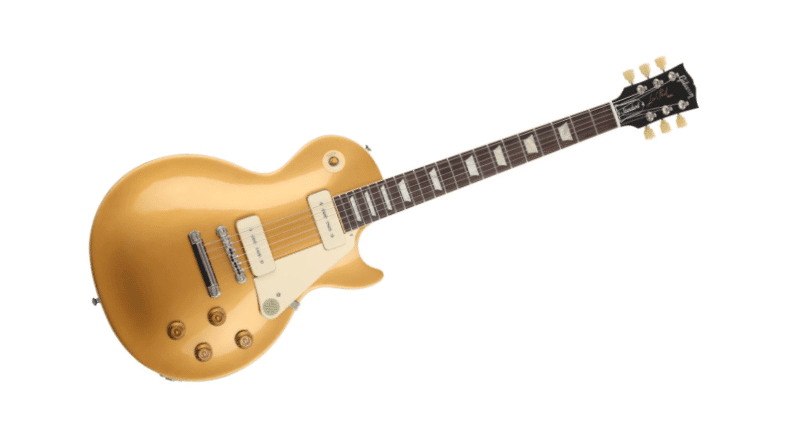
The amazing Les Paul Standard ‘50s Gold Top P90 is the Les Paul genesis – the first production model, just as it was in 1952.
In true Les Paul fashion, it’s made with a mahogany body, with a carved maple top, adding even more bite to the already snappy P90 tone. This is a heavy guitar, but the sustain and resonance is like nothing else. It has a classic ‘50s neck, which will definitely appeal to those who like a thicker profile, and it’s made with a beautiful rosewood fretboard. Unlike an original ‘50s model, this version has PLEK’d frets, which results in incredible feel and playability.
Tonally, the ‘50s Standard Les Paul P90 delivers a huge punch. It has 2 soap bar P90s, and a 3 way selector switch. It can handle a full spectrum of tone, from crisp cleans, to rowdy overdrive that absolutely slices through any mix. In the neck position it delivers surprising warmth, and in the bridge position it serves up epic lead tones.
Fender Noventa Telecaster – Mid Range
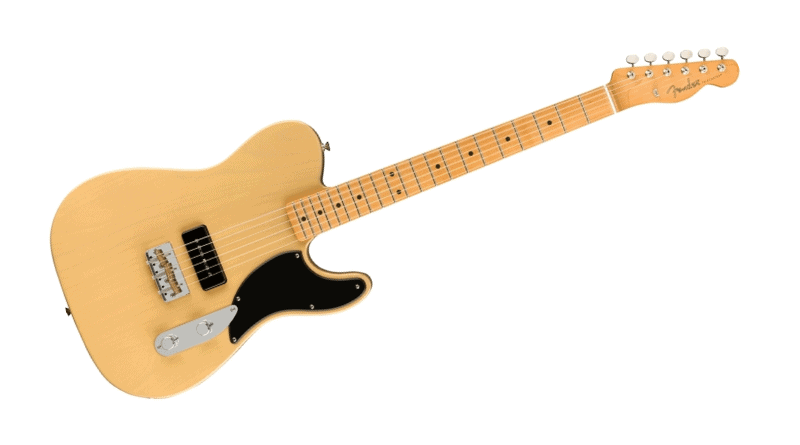
Fender are best known for their standard single coil pickups, but they also produce some great P90s, just like that on the Fender Noventa Telecaster. This is a stripped back Tele that is designed to rock hard.
It’s made with an alder body, which makes it much lighter than the Gibson. The bolt on maple neck is snappy, and offers great feel thanks to its slim C profile ‘60s neck. It doesn’t have any fancy PLEK fret dressings, but the quality of the finish is still excellent.
As far as tones are concerned, it offers a well balanced sound. It’s on the brighter side of things, but still has that P90 tone that attracts so many to these pickups. Because of the brightness, it can take on country and pop tones, but it still has plenty of bite for punk and rock, too. In all, it’s a great all rounder.
Gretsch G2622T P90 Streamliner – Budget
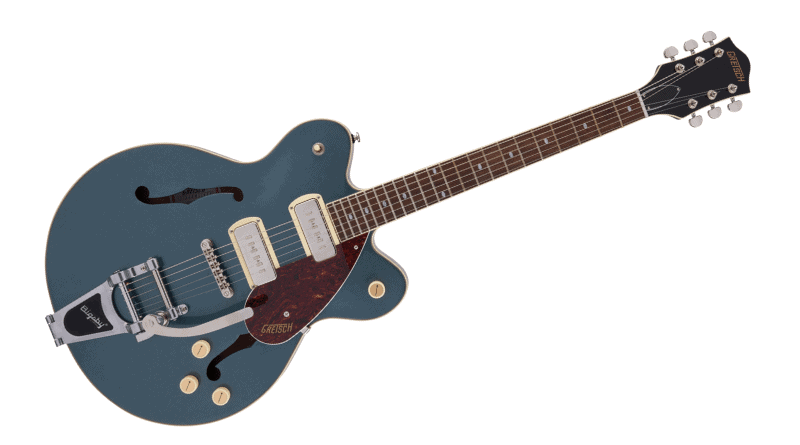
The Gretsch G2622T P90 Streamliner is a classic looking Gretsch semi hollow with the added bite and bark of a pair of P90s. In a departure from the usual maple construction of semi hollow guitars, the body is made from mahogany, which adds extra warmth to balance the brightness of the twin P90 pickups.
It has a nato neck with a very comfortable U shape profile that will appeal to a wide range of players. It offers good quality fretwork, and great feel.
Unlike the other P90 options, it features a Bigsby vibrato bridge, which opens up a whole new range of tones, including some really interesting P90 surf rock sounds. The neck position is warm, and actually very sweet sounding. The bridge pickup does everything from extremely bright cleans to aggressive, gritty distorted tones.
Final Thoughts on Humbuckers Vs. P90s
Ultimately, it’s impossible to say which of the two pickup types is technically better, as they both have some unique properties that give them an edge over the other in specific areas. At the end of the day it boils down to personal preference.
If you want fat tones without any interference and superb clarity at high gain, then humbuckers are a good choice for you. If, on the other hand, you like raucous, brash tones with tones of bite and brightness, then P90s are probably the best bet for you.

